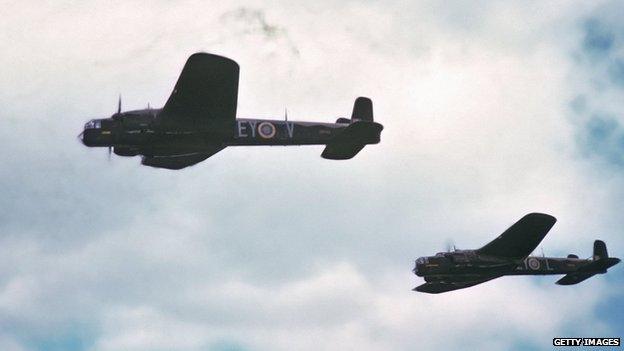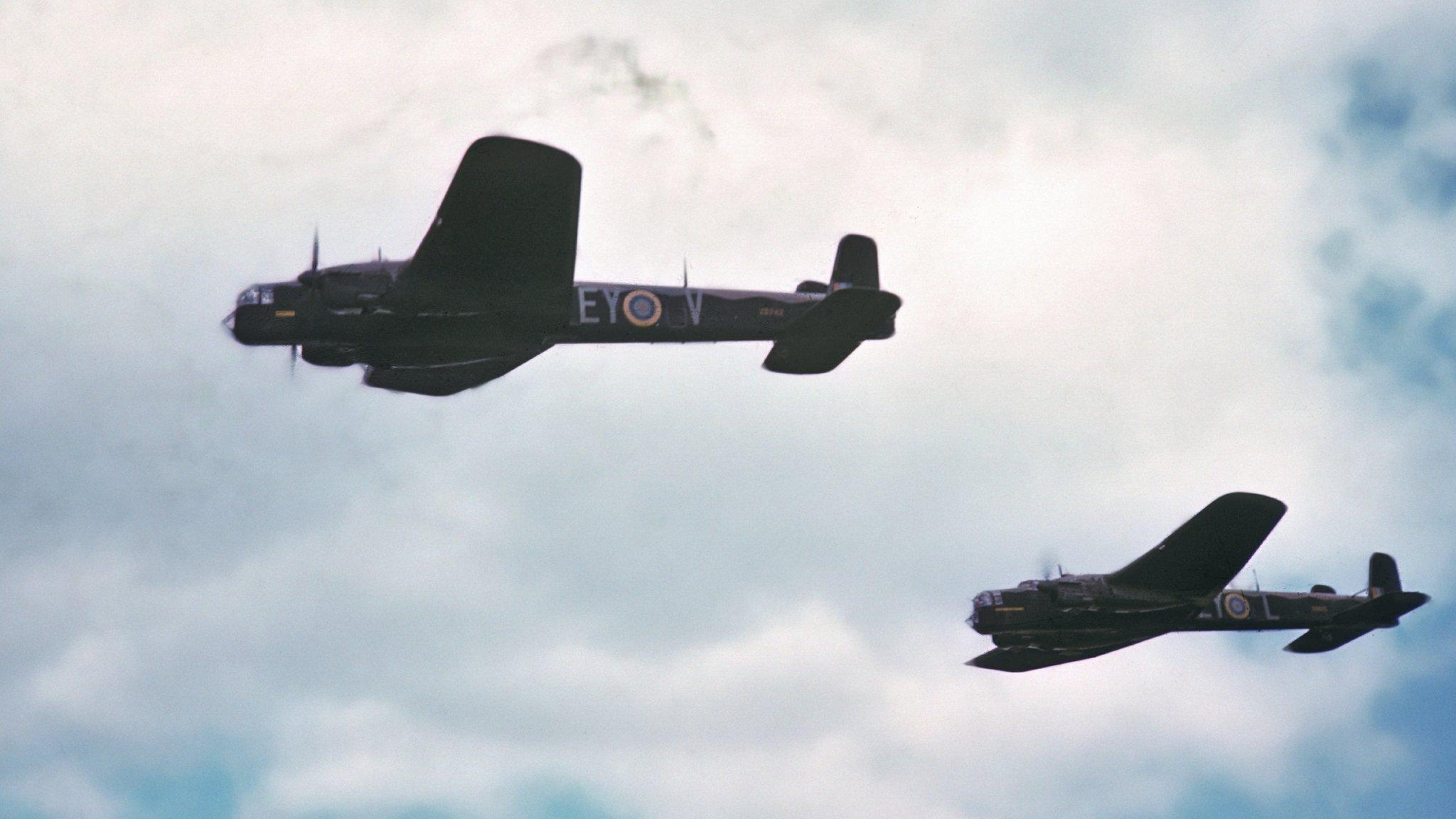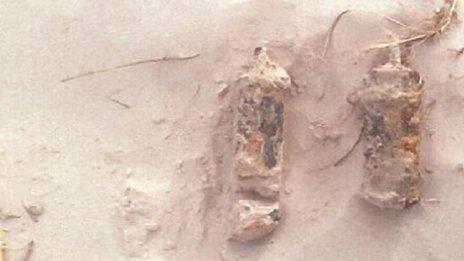No evidence of WW2 radioactive contamination at Nairn quarry
- Published

Armstrong Whitworth Whitley bombers flew from Kinloss along the coast from Nairn in WW2
Tests have found no evidence of radioactive contamination at a quarry where it was rumoured military aircraft were dumped after World War Two.
The former Kingsteps Quarry at Nairn was examined for the remains of aircraft instruments which were illuminated using radioactive paint.
Highland Council ordered the survey following "word of mouth" suggestions of buried planes.
Surveys of the wider area, however, are continuing.
A Highland Council spokesperson said: "Results from a radiological survey of the former quarry site at Kingsteps show that although some naturally occurring radiation was identified, there was no indication of radium recorded.
"Wider ground investigations and general site survey of any possible impact from historical fly-tipping in the area are still ongoing with planned investigations around November to the New Year."
Along the Moray Firth coast from Nairn, it is thought more than a 1,000 aircraft were broken up, burned and buried near an RAF station at Kinloss.
Armstrong Whitworth Whitley bombers were among the aircraft that flew from the site during the war.
Valentine tank
The remains of other war-time activity have been found in and around Nairn in recent years.
Two mortar bombs were discovered at the town's East Beach in March 2012 and were disposed of by bomb disposal experts.
Nairn's beaches were used to prepare soldiers and sailors for the Allied landings in Normandy in June 1944.
Military personnel were based at nearby Fort George at the time.
The remains of tanks used in the rehearsals have previously been found further east along the coast from Nairn.
A Valentine tank was lost by the Royal Hussars off Culbin Sands and two others in Burghead Bay.
- Published10 April 2015

- Published21 March 2012
